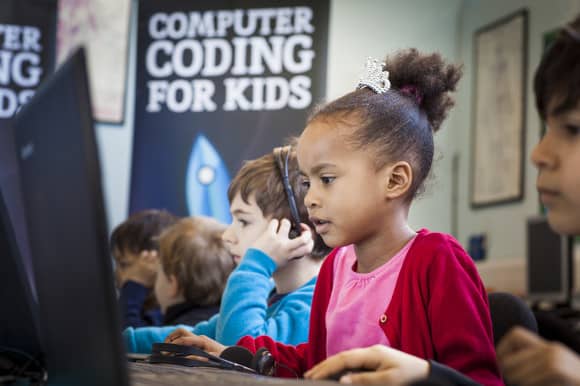Technology is a fundamental part of modern life. That makes introducing your child to technology essential, but it can feel like a scary venture. Internet predators, social media bullying, and violent or explicit videos are just some of the dangers you might rightly fear. No parent wants their child exposed to harmful content online, so it’s important to guide your child through this journey. Introducing your child to technology can seem daunting, but it is necessary for their well-being.
Despite its risks, technology can teach your child valuable communication skills, offer educational opportunities, and help them learn basic responsibility. Show your child that the digital realm can be a positive place by starting their tech journey safely. Consider these five ways to introduce your child to technology in a way that makes you both feel comfortable.
1. Get a Kid-Friendly Cell Phone
You want your child to be able to stay in touch with you, but you’re concerned about unsupervised screen time. One solution is to use technology specifically designed for children. Phones for kids block internet access and social media, so kids face fewer online temptations when they’re out of your sight. These devices still offer the ability to make calls, send texts, download kid-friendly apps, and use GPS navigation. Kid-safe phones enable essential communication without the dangers that accompany unfettered access to the internet.
Such devices also prevent the downloading of applications that may have violent or graphic content not appropriate for children. In their place is a menu of safe apps, ranging from a calculator to a camera to a music player. Purchasing a phone specifically designed for kids lets you restrict the content your child regularly consumes, including applications. Kid-friendly phones allow the fun and utility of a phone, while limiting the risks.
2. Talk to Your Child About Internet Safety
While a kids phone is a helpful way to shield children from online dangers, your child is going to encounter the internet eventually. That’s why it’s important to keep open a clear line of communication with your kiddo. If your child experiences any danger on the internet, you want them to be able to come to you for help.
Children depend on their parents to teach them right from wrong and prudent behaviors from imprudent ones. Many kids don’t understand that their actions on the internet are unsafe until a parent tells them. So, talk to your child about the basics of internet safety. Let them know what information is not OK to share online, such as their address, phone number, and passwords. Sure, they can complain about their homework or gush about their favorite celebrity, but they should never share personally identifiable information.
3. Don’t Be Afraid to Set Parental Controls
Setting parental controls allows you to limit access to content on entertainment sites, social media platforms, gaming consoles, and other devices. Netflix, for example, enables parents to set viewing permissions according to the maturity rating of different movies, shows, and games. This feature will block any titles that you deem inappropriate for your child. Without it, your child could — knowingly or unknowingly — watch a movie containing violence, nudity, or adult language.
As noted, parental controls are also available on everything from your daughter’s Xbox to your son’s school-issued iPad. These controls can filter out content with inappropriate subjects or language from your child’s device without them ever knowing. They allow your child the freedom to use technology while you can worry less about them being exposed to harmful content.
4. Download Educational Applications
Of course you want to keep technology from doing your child harm, but don’t ignore the good it can do. Children can use educational apps to learn new skills or improve upon those that have already been introduced. Apps for kids teach all kinds of subjects using engaging techniques and materials. Lessons range from identifying shapes to learning addition to discovering different languages.
Educational apps are both safe and mentally stimulating, and many of them are free. Your child can pick up some Spanish on Duolingo or master multiplication on Khan Academy Kids at no charge. Plus, these apps make learning a fun, interactive experience.
5. Limit Screen Time
Although technology offers definite benefits, it’s no secret that too much screen time can negatively affect your child. Exposure to blue light emitted from screens can take a toll on your child’s sleep and brain function. Applications can limit screen time by allowing you to lock various devices. This feature can be used to limit the exposure your child has to damaging blue light. Limiting screen time teaches your child that technology is a tool, not a necessity.
Many applications that limit screen time can also share how long your child spends on each app. You can use this information to help your child set goals for technology use. Encourage them to increase the time they devote to educational apps and decrease the time they use social apps.
Safely introducing your child to technology can be intimidating, but with these tips and tools you have no need to worry. Whether you rely on tech like parental controls or good old-fashioned parental advice, you can confidently guide your child through their tech journey.
